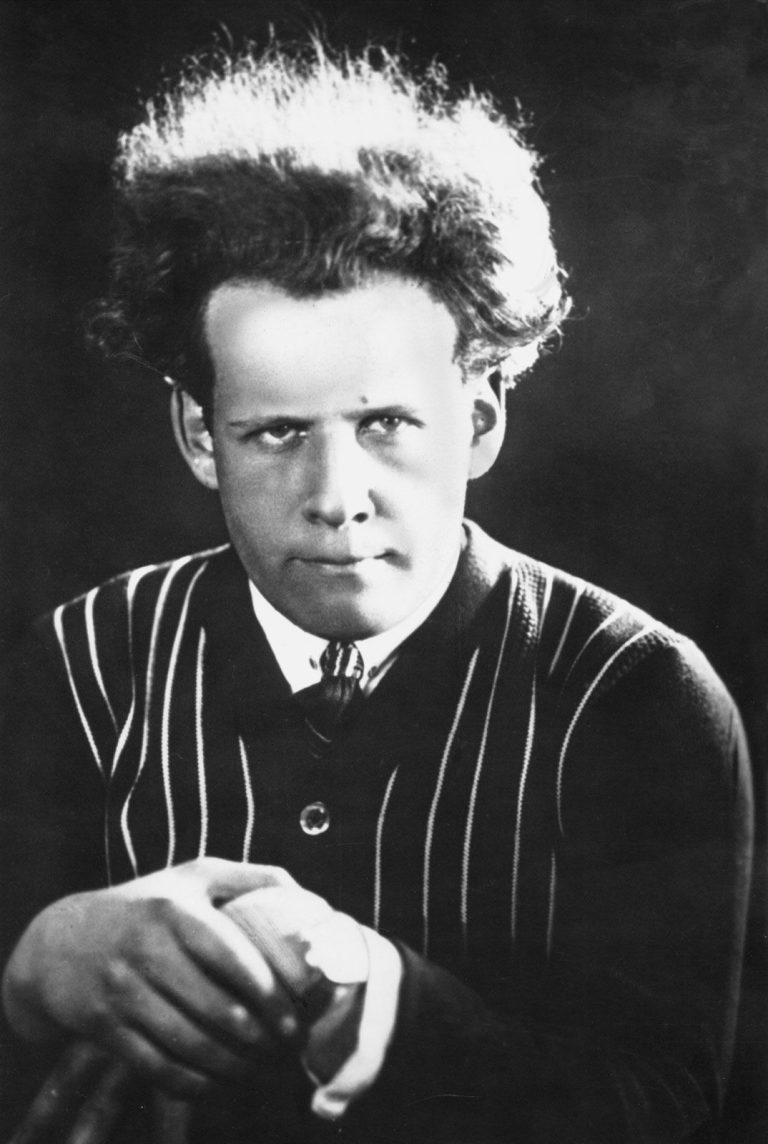Date of Birth: January 22, 1898
Zodiac Sign: Aquarius
Date of Death: February 11, 1948
Biography
Sergei Mikhailovich Eisenstein was a Soviet film director and film theorist, often considered one of the greatest and most influential filmmakers in the history of cinema. Born in Riga, then part of the Russian Empire, Eisenstein initially studied architecture and engineering, but his passion for theater and film led him to the Moscow Proletkult Theater where he began his career in the arts. His innovative use of montage and his theories on film editing have had a lasting impact on cinema. Eisenstein’s film career took off with his first major work, “Strike” (1925), but it was his next film, “Battleship Potemkin” (1925), that brought him international acclaim. This film, noted for its revolutionary use of montage and its powerful portrayal of the rebellion on the battleship Potemkin, is still studied in film schools around the world. Other significant works include “October: Ten Days That Shook the World” (1928) and “Alexander Nevsky” (1938), the latter also known for its collaboration with composer Sergei Prokofiev. In addition to his filmmaking, Eisenstein wrote extensively on film theory, focusing on the principles of montage. Despite facing political pressures and censorship from the Soviet regime, he continued to work and innovate until his death in 1948. Eisenstein’s legacy lives on through his films and his theoretical contributions to the art of cinema.
5 Interesting Facts about Sergei Eisenstein
1. Sergei Eisenstein was initially trained as an architect before turning to theater and film.
2. His film “Battleship Potemkin” (1925) is often cited as one of the greatest films of all time.
3. Eisenstein was a pioneer of the theory and practice of montage, which he used to create emotional impact and convey complex ideas.
4. Despite facing significant political censorship, Eisenstein managed to make several critical films that have been influential in both Soviet and global cinema.
5. He collaborated with renowned composer Sergei Prokofiev on the film “Alexander Nevsky” (1938), which is noted for its powerful score and innovative sound design.
5 Most Interesting Quotes from Sergei Eisenstein
1. “The hieroglyph is an idea, not a sound. The idea is expressed by a series of images.”
2. “Cinema is, first and foremost, montage.”
3. “The montage is not an idea composed of successive shots stuck together but an idea that derives from the collision between two shots that are independent of one another.”
4. “Realism in art is not an exact copy of reality, but rather the artist’s interpretation of what is essential.”
5. “The use of montage in cinema is the same as the use of punctuation in literature.”
Highest Net Worth Achieved
Sergei Eisenstein’s highest net worth is not well-documented, but as a director working under the Soviet regime, he was not known to have accumulated personal wealth. Instead, his wealth was in the significant cultural and artistic contributions he made.
Children
Sergei Eisenstein did not have any children.
Relevant Links
1. [Biography on Britannica](https://www.britannica.com/biography/Sergey-Eisenstein
2. [Filmography on IMDb](https://www.imdb.com/name/nm0001178/

